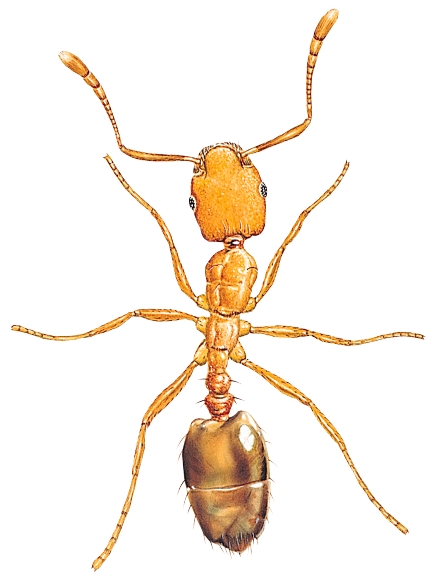Pharaoh Ant

Appearance
- Workers are up to 2mm in length with the queens being slightly larger at between 3-6mm.
- Pharaoh ants are a light yellow/brown colour in appearance.
Biology
- Female ants can lay between 350-400 eggs in their lifetime, with colonies containing up to 200 queens nests containing as many as 250,000+ ants are not uncommon.
- Pharaoh ants are extremely successful and can produce sexually mature adults all year round.
- Swarming can take place all year round with colonies able to spread throughout large buildings in as little as six months.
- Queens and small quantities of workers carrying eggs, larvae and pupae can leave exisiting nests to set up new colonies elsewhere leading to a rapid increase in numbers.
Habitats
- Like all ants, Pharaohs’ leave pheremone trails to lead co-workers to food sources.
- A Pharaoh ants’ nest can be small enough to fit on a tea spoon and colonies are often found in kitchens and ventilation systems. They are also a particular hazard in hospitals where ants can help to spread disease very quickly due to their adaptability to live in very small cracks and crevices.
- Pharaoh ants will feed on a range of protein based food – meat, dead insects, blood etc.
Treatment
- Due to the habitats that Pharaoh’s ants favour and their persistence, multiple treatment visits are generally required to achieve control.
- A variety of monitoring devices are used in conjunction with insecticides to target colony sites which can be a particular problem in food factories and communal ventilation systems.